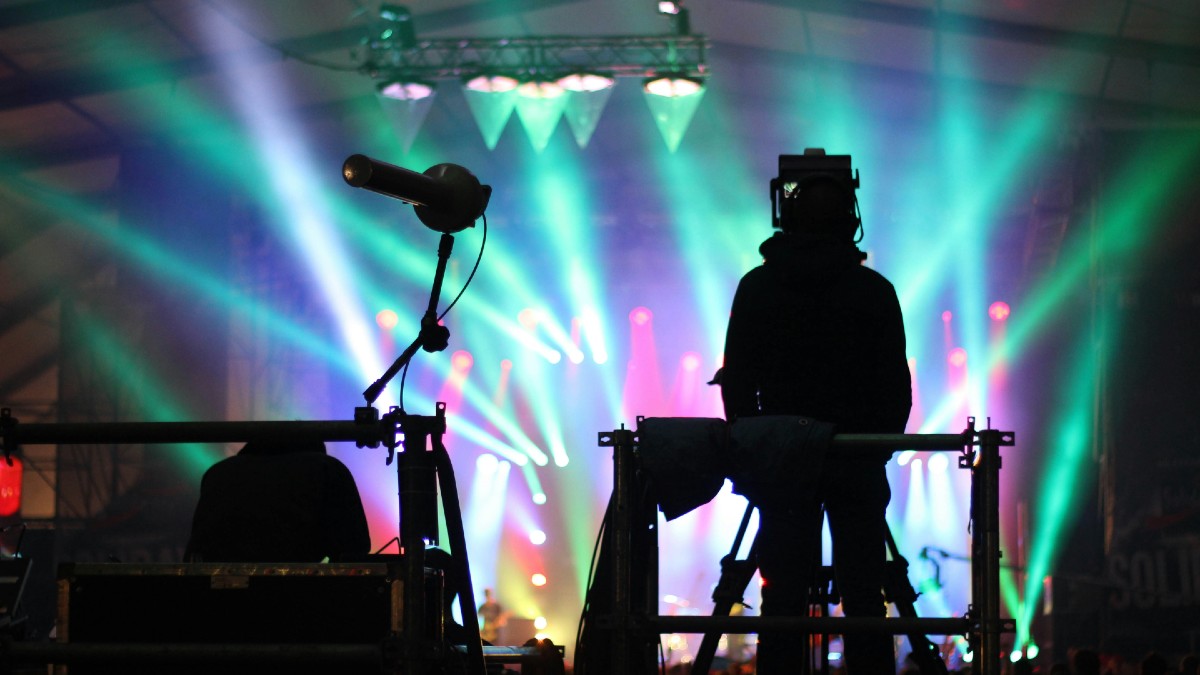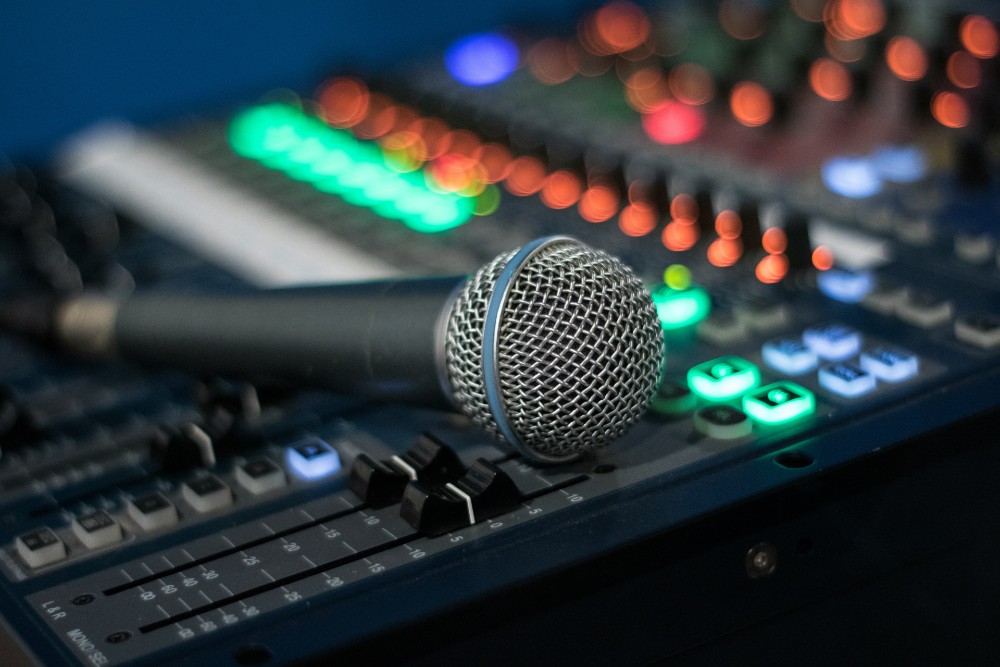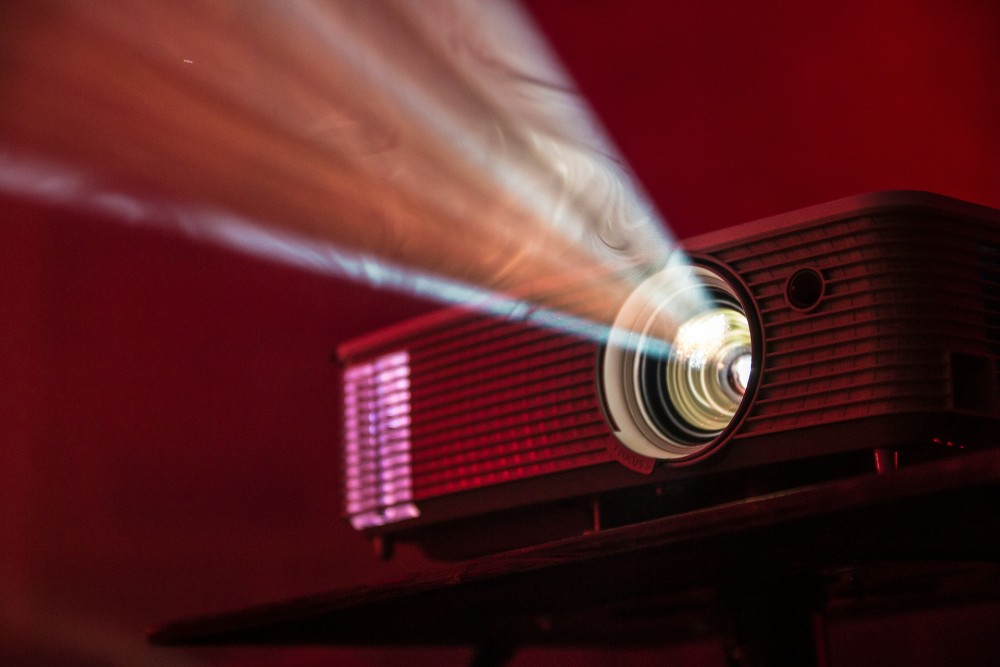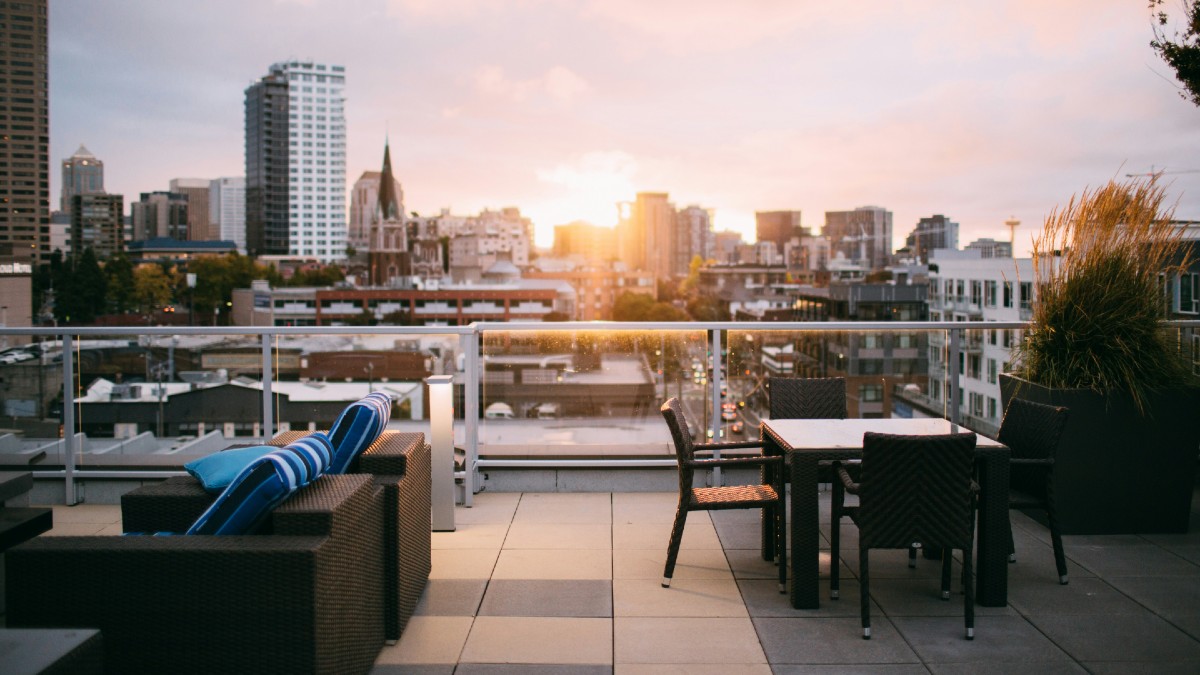
Written by: Cara Tirona
April 16, 2025
Audio-visual (AV) equipment plays a crucial role in creating memorable and professional events. From corporate conferences to weddings, ensuring your AV setup runs smoothly is essential for delivering a seamless experience to your audience. Whether you’re working with high-tech systems or just the basics, these AV equipment tips will help you avoid common pitfalls and elevate your event.
Importance of AV Equipment in Events
One of the primary functions of AV equipment is to facilitate effective communication. In corporate events, for instance, clear audio and high-quality visuals ensure that presentations and speeches are delivered with impact. This clarity helps engage the audience, making them more likely to retain information and stay attentive. In social events, like weddings, AV equipment can share key moments through videos and live streams, deepening the emotional connection for those in attendance.
Creating Atmosphere
Audio-visual elements significantly contribute to the event's overall atmosphere. Music, lighting, and visuals can set the tone for your gathering, whether it’s a lively celebration or a formal presentation. For example, ambient lighting can enhance the mood of a gala dinner, while dynamic soundscapes can immerse guests in the theme of your event. By utilising AV equipment effectively, you create an engaging environment that resonates with attendees.
Supporting Engagement
In our tech-savvy world, audiences expect a high level of engagement at events. Interactive AV solutions such as live polls, Q&A sessions, and social media integration can make events more interactive and enjoyable. These tools allow participants to feel involved in the experience rather than passive observers, fostering a sense of community that enhances networking opportunities and encourages collaboration among attendees.
Enhancing Audience Interaction
To boost engagement further, consider incorporating additional interactive technologies such as audience response systems and gamification elements. Audience response systems enable participants to answer questions using their devices, with real-time results displayed on screens. This immediate feedback can shape discussions and make the audience feel more invested in the content being presented.

Key Considerations for Event AV Setup
When planning an event, the AV setup is often overlooked in the hustle and bustle of logistics. However, understanding the key considerations for your AV equipment is paramount. This ensures not only the functionality of your tools but also the overall ambience and engagement of your audience. Here are some essential factors to keep in mind.
Understand Your Venue
Before diving into equipment selection, familiarise yourself with the venue. The layout, size, and acoustics all play a significant role in how sound and visuals are perceived. Take the time to visit the space to identify potential challenges, such as blind spots for screens or areas with excessive noise. This knowledge will guide your decisions on which AV equipment to use and how to position it effectively.
Choose the Right Equipment
Not all AV equipment is created equal, so it’s essential to match your technology to your event type. For instance, a corporate presentation may require projectors and screens that can display clear visuals, while a wedding might focus more on sound quality for speeches and music. Consider renting high-quality equipment that meets your needs, ensuring you have the necessary cables and adapters, especially when using multiple devices.
Plan for Connectivity
In our increasingly digital world, a reliable internet connection is vital for many events. Ensure that your venue has the necessary bandwidth to support live streaming, video conferencing, or any online collaborative tools you might be using. If the venue's Wi-Fi is questionable, consider bringing a mobile hotspot or checking if wired internet is available.
Test Your Setup in Advance
There's no substitute for a thorough pre-event testing regimen. Schedule time to set up the equipment at least a few hours before the event starts. This allows you to troubleshoot any issues that may arise without guests present.
Check Sound Quality
Start with sound checks. Ensure that microphones work seamlessly by testing different types (lavaliere, handheld, etc.) and adjusting the volume levels accordingly. Walk around the venue to identify sound distribution and adjust speakers to minimise echoes or dead spots.
Evaluate Visuals
Next, focus on the visual components. Project visuals on screens for clarity and alignment. Check for any distortion in the images and confirm that all presentations, videos, or multimedia elements display correctly. This step is crucial, especially in larger venues where projection size and resolution can vary tremendously depending on distance.
Evaluate Backup Systems
Consider having a backup plan. Test any redundancy systems such as secondary microphones, additional projectors, or spare cables. This preparation can save you time and stress should unforeseen issues occur during the event.
Practice Timing and Transitions
Run through the entire event plan with your team. Familiarise everyone with transitions, cue timings, and how to handle any unexpected adjustments. Practice makes perfect; therefore, conducting a rehearsal can significantly enhance the overall smoothness of your event.

Best Practices for Effective AV Coordination
Coordinating audio-visual elements for an event requires meticulous planning and clear communication. Adhering to best practices can significantly enhance the experience for both presenters and attendees. Let’s explore some key strategies to ensure effective AV coordination throughout your event.
Communicate Clearly
Effective communication is essential for seamless AV coordination. Ensure that all team members are on the same page regarding roles and responsibilities. Designate a point person for AV management who can coordinate with presenters, troubleshoot issues, and communicate with the venue staff when necessary. Having a clear line of communication reduces confusion and allows for quicker resolution of any problems that may arise.
Develop a Comprehensive Technical Rider
A technical rider is a detailed document outlining all the equipment required for your event, including microphone types, lighting specifications, and audiovisual elements. By providing venue staff and technicians with a technical rider in advance, you can ensure they understand your needs, which can help avoid last-minute surprises. This document should also include preferred layouts for stages, seating, and any specific technical requests unique to your event.
Utilise Event Management Software
Consider leveraging event management software to streamline planning and coordination processes. These platforms can help in tracking attendee registrations, managing schedules, and ensuring that all technical requirements are being met. Many solutions also offer collaborative features, allowing multiple team members to access and modify event information in real-time, promoting efficiency and clarity throughout the planning phase.
Partner with Reliable Vendors
Selecting reputable AV vendors is crucial for the success of your event. The right partners not only bring quality equipment but also expertise that can make a significant difference in the execution of your event. When choosing AV vendors, consider their experience, equipment quality, and customer reviews. Look for vendors who specialise in your type of event, whether it’s a corporate conference, a live concert, or a wedding, as they will have tailored solutions and knowledge that can enhance your specific setup.

Troubleshooting Common AV Challenges
Despite thorough planning, AV challenges can still arise during an event. Here are some common issues you may encounter and tips for resolving them effectively.
Audio Issues
Problem: Poor sound quality, feedback, or no sound at all.
Solution: Regularly check audio levels and ensure all connections are secure prior to the event. Have a sound check prior to the event to identify any issues early. If feedback occurs during the event, a quick adjustment of microphone placement or speaker positioning can often resolve the problem. Always have a dedicated sound technician on standby to manage any audio-related issues as they arise.
Video Failures
Problem: Projector or screen malfunctions, image distortion, or no video output.
Solution: Test all video equipment thoroughly ahead of time. Ensure compatibility between all devices, including laptops, projectors, and screens. During the event, keep an extra set of cables and adapters on hand to address unexpected connectivity issues. In case of a device failing, an alternate source for video playback should be readily available.
Lighting Problems
Problem: Inadequate lighting or unexpected shadows.
Solution: Collaborate closely with your lighting technician before the event to establish a comprehensive lighting plan. This plan should outline key areas that require illumination, such as stage areas, audience spaces, and any focal points intended for visual highlights.
Pre-Event Testing: Conduct a thorough walkthrough of the venue with your lighting technician to assess how natural light interacts with artificial light sources. Make adjustments as necessary based on both day and night settings if the event spans multiple hours.

Essential AV Equipment Checklist
To ensure you aren’t missing any critical elements for your event, keep a checklist handy. Here’s a comprehensive list of essential AV equipment:
Audio Equipment
Microphones: Wireless and wired options are crucial for addressing various scenarios. Consider Lavalier microphones for speakers on the go or handheld mics for audience interaction.
Speakers: Ensure you have adequate sound coverage with both main speakers and monitors. Consider the venue's acoustics when selecting your equipment.
Mixing Console: A good mixing console allows you to balance sound levels from multiple audio sources effectively.
Audio Interfaces: These can be essential for connecting multiple audio inputs to a computer for recording or streaming purposes.
Cables and Connectors: Always carry a variety of audio cables (XLR, TRS, etc.) and adapters (from 1/4 inch to RCA) to accommodate different audio equipment setups.
Sound Check: Schedule a sound check before the event to adjust levels and equalisation for clarity, ensuring that the audience hears every word without distortion.
Visual Equipment
Projectors and Screens: Choose the right projector based on the size of your audience and the amount of light in the room. Make sure screens are visible from all angles and suitable for your projector’s output.
Monitors/TVs: For smaller venues or breakout sessions, consider using monitors or large TVs to display presentations clearly. This can help maintain engagement in intimate settings while providing excellent image quality.
Cameras: If you plan to livestream or record the event, invest in high-quality cameras. Consider both static and roaming cameras to capture various angles and interactions.
Video Switchers: These devices are essential for mixing different video feeds, allowing for a dynamic viewing experience. Use them to switch between presentations, live feeds, and video clips seamlessly.
Cables and Connectors: Much like audio equipment, make sure you bring a variety of video cables (HDMI, VGA, etc.) and adapters to ensure compatibility with all devices.
Supporting Equipment: Tripods, dollies, and stabilisers are crucial for camera work. They ensure steady shots and offer flexibility in movement during the event.
Lighting for Visuals: While primary lighting illuminates the venue, additional lighting may be necessary to highlight displays or presenters. Consider softbox lights or floodlights for this purpose.
Conclusion: Simplify Event Planning with VenueNow
A seamless AV setup is a critical component of a successful event. By planning ahead, coordinating effectively, and leveraging the right tools, you can ensure your AV equipment enhances rather than detracts from the experience.
Looking for a venue with built-in AV equipment to simplify your planning process? VenueNow offers advanced search tools to find the perfect venue with all the AV features you need. Let us take the stress out of event planning so you can focus on creating an unforgettable experience.
Find your ideal venue on VenueNow today!
Looking for an event venue to hire?
VenueNow has you covered with over 2,000 venues across Australia ranging from large event spaces to small meeting rooms. Find your perfect venue for hire faster than anywhere else.
Follow us on social media to stay up to date with the latest news
Customers
Want to get in contact?
Call our support team on 1300 647 488 during business hours AEST.
© Copyright VenueNow 2025 | SPARE GROUP PTY LTD | ABN 22 607 830 302











